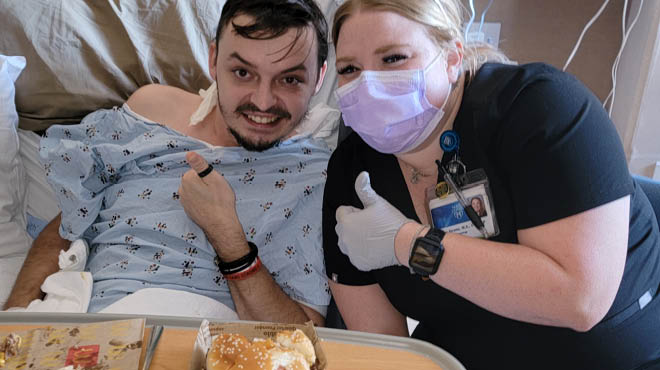Understanding aphasia and its causes

"It's on the tip of my tongue" is a phrase people say time and time again. Sometimes it's hard to find that word you're looking for — whether it's someone's name, an everyday object, a favorite restaurant menu item, your address or something else. But for people with a disorder called aphasia, it's as if their brain's word cabinet has fallen over and mixed their words around, resulting in varying levels and forms of impairment with language comprehension and expression.
Causes of aphasia
A stroke and its subsequent brain damage is the most common cause of aphasia. A stroke results from the bursting or blockage of blood vessels supplying the brain. This reduces blood flow to the brain, depriving the brain of essential nutrients and oxygen needed to support brain cell life. When a stroke occurs, the brain's language centers can be affected if they don't receive essential components like blood and oxygen.
Aphasia also can develop due to a brain tumor, infection or degenerative disease. There always is an underlying cause of aphasia, which determines the severity of the person's language difficulties.
Temporary aphasia can appear during a migraine. It can occur from a seizure or transient ischemic attack, or TIA, sometimes called a mini-stroke. Anyone who experiences a TIA is at an elevated risk for a full-blown stroke in the future.
Symptoms of aphasia
A person who is affected by aphasia may:
- Experience difficulty understanding conversations
- Have trouble writing coherent sentences
- Speak in brief or incomplete sentences
- Use words or sentences that don't make sense
Seek medical help immediately if you or a loved one experiences these symptoms. A form of aphasia can be the first sign of stroke.
Types of aphasia
Aphasia presents itself in three different ways. Your health care team may classify aphasia as:
- Broca's (non-fluent) aphasia
Non-fluent aphasia is identified as decreased language output, difficulty identifying words and incomplete or short sentences. People with non-fluent aphasia are aware of their communication difficulties as their cognition and comprehension are most commonly still intact. - Wernicke (fluent) aphasia
Fluent aphasia is identified as language output that is incoherent composure of words, word combination errors, grammar mistakes and incorrect word choices. People with fluent aphasia also may have difficulties with cognition and comprehension. - Global aphasia
Global aphasia results from a major stroke that affects the brain more extensively causing cognition, comprehension and language difficulties.
Testing for aphasia
A common initial test from your health care team to determine the cause of aphasia is a CT or MRI.
Aside from that, testing for aphasia usually involves exercises and observations to gauge your ability to:
- Explain a situation depicted on paper
- Follow directions
- Have a conversation
- Read and write
- Repeat words and sentences
Treatment and coping with aphasia
Speech-language therapy is the most common form of treatment for aphasia. Early intervention and timely treatment are imperative for achieving maximum results.
A speech-language pathologist works with patients with aphasia to regain as many previous language skills as possible or, with certain diseases and conditions, to maintain their current communication ability. Treatment exercises often incorporate meaningful activities relevant to the patient to increase motivation and participation. Exercises may include functional tasks, such as ordering food from a menu, writing on a greeting card, or stating your address or birthdate.
In terms of coping, family and friends can adjust by simplifying conversations to ensure comprehension. This allows for active participation for people with aphasia and eases their apprehension about communication. Those with aphasia also may choose to use images and gestures to help them communicate.
Stroke and aphasia support groups also can aid healing and coping for patients and family members.
Aphasia is a challenging communication disorder that creates communication obstacles for patients and their families. Fortunately, raising awareness about the condition, and its underlying causes and treatment options can help reduce the effects of aphasia on many lives.
Delaney Collins is a speech-language therapist in La Crosse, Wisconsin.



